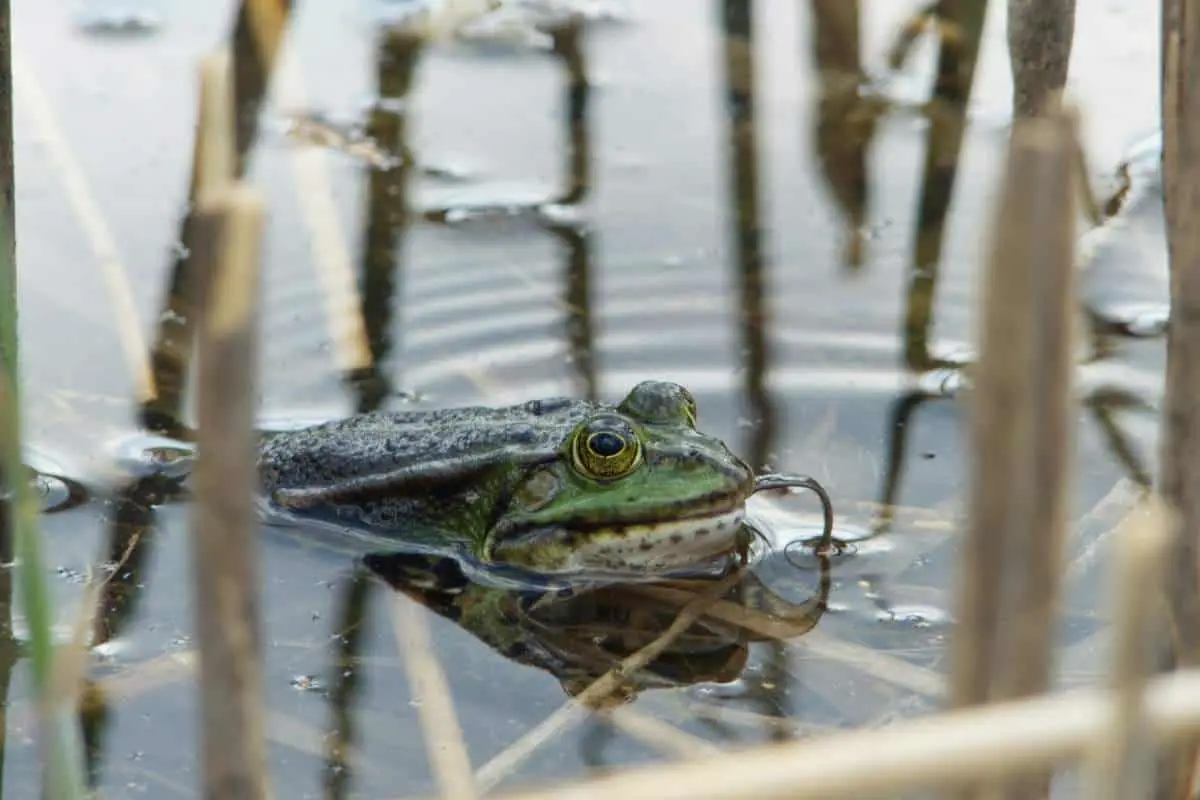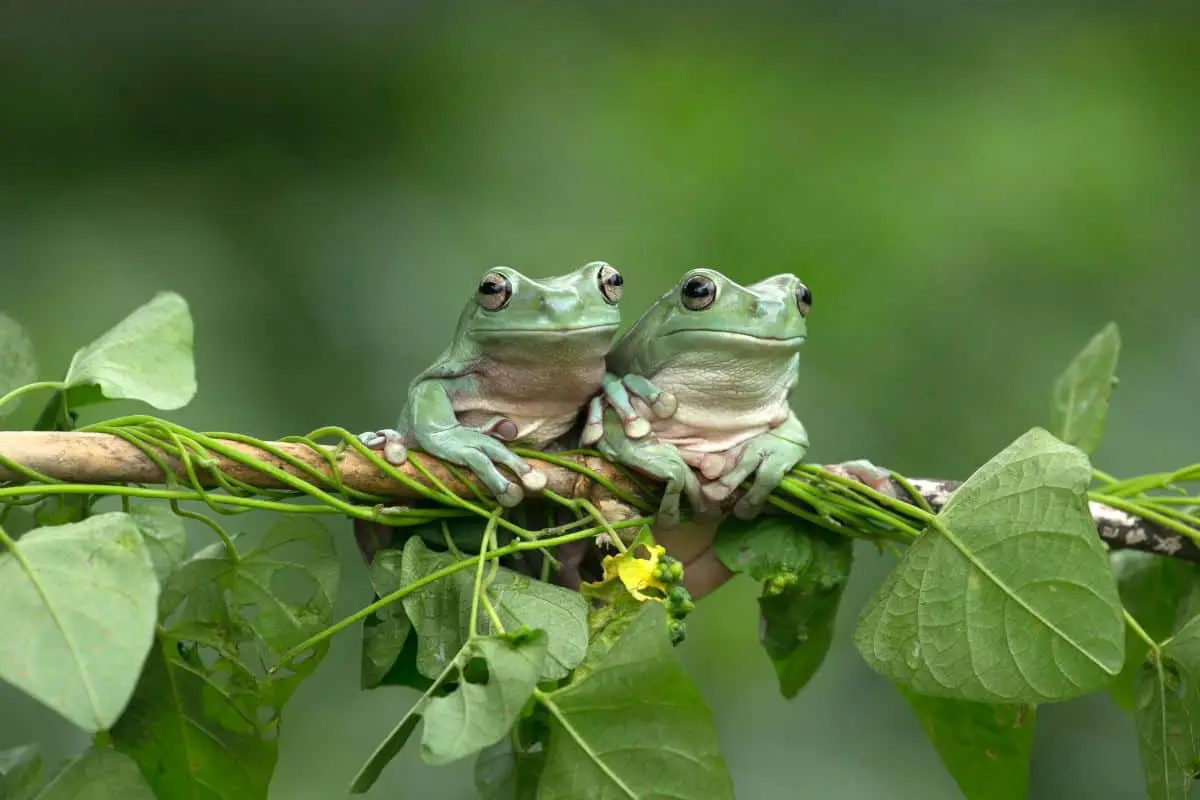A frog’s tongue is a unique and fascinating part of its anatomy. There are over 5,000 species of frogs in the world, and almost all of them have tongues that can stretch out from their mouths when they’re hunting for food.
This body part is also long enough to allow the frog to catch flying insects without needing to move from its position. So, how long is a frog’s tongue? This article will answer this commonly asked question.
Key Takeaways:
- The tongue of a frog is usually one-third the length of its body.
- They have a viscoelastic tongue and non-Newtonian saliva that help them catch their prey.
- Some of the frogs with the longest tongues are the Goliath frog, African bullfrog, and American bullfrog.
- Frogs’ tongues are capable of catching an insect in 0.07 seconds.
How long is a frogs tongue?
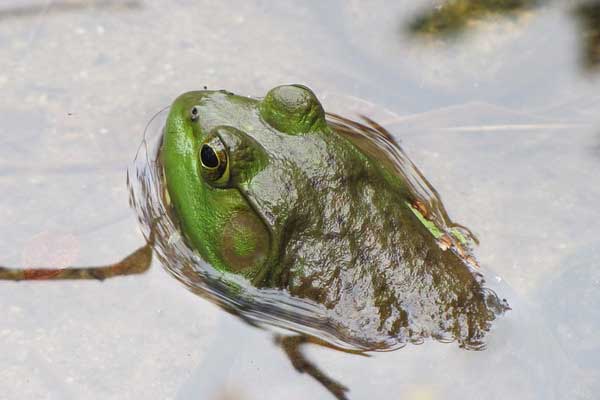
The species and size of a frog determine the average length of its tongue. In general, frog tongue length is about one-third the length of their body.
However, some frogs have tongues that are much longer or shorter than this. The animal uses this body part to catch prey, such as flies, grasshoppers, and insects.
How does a frog’s tongue work?
Researchers recently learned that frogs had developed a special method for catching their prey. To catch their prey, they use a viscoelastic tongue and non-Newtonian saliva. A substance’s ability to be both viscous (thick) and elastic is referred to as viscoelasticity.
This means that when a frog snaps its tongue at an insect, the tongue creates an impact similar to a car shock absorber, preventing the insect from escaping. Their tongue wraps around their prey, allowing them to grip the insects with their saliva.
The saliva coating the frog’s tongue is also non-Newtonian, which means that when stressed, it does not behave like water or other fluids. When stretched or compressed, it thickens, preventing insects from escaping between the frog’s jaws after being grabbed by its tongue.
Frog tongue appearance
A frog’s tongue is a muscular, sticky organ that captures insects and other small prey. Their tongues are also long and pointed that can be extended with great speed.
This species’ tongue has the ability to retract back inside the mouth to protect it from getting harmed. Frogs generally use their tongues to catch prey, such as flies or ants.
Why is a frog’s tongue so long?
The evolution of frog tongues has been linked to the insect species they eat. Frogs have long tongues because their prey is typically insects that can fly. As a result, frogs needed to create a method of catching insects that didn’t require them to move their bodies too much since they’re only capable of jumping.
A long tongue would allow them to eat insects without moving, allowing them to remain motionless while eating. The longer a frog’s tongue, the more likely it’s that it will catch its prey.
How fast are frog tongues?
Frogs are natural insect predators, with tongues that catch prey at incredible speeds. They use two muscles to do so: the retractor and the extender. Their tongues can extend and catch an insect in 0.07 seconds, which is faster than the blink of an eye.
Their tongues’ retractor muscles can also pull back to their mouth at 12 times the acceleration of gravity, which is greater than the acceleration of gravity experienced by astronauts during a rocket launch, which is usually around three times the acceleration of gravity.
Three frogs with long tongues
1. Goliath frog
Scientific Name: Conraua goliath
The Goliath frog, recognized as the biggest species of frog and boasting one of the longest frog tongues, is native to West Africa and is occasionally kept as a pet. They can be found in Cameroon, coastal, and equatorial Guinea. This species can grow up to 12 inches long and has a tongue about 3.5 inches long, which they use to catch prey.
They consume a variety of animals, including insects, spiders, small mammals, and even other amphibians like salamanders, frogs, and newts. Goliath frogs live in tropical rainforests near swamps, marshes, and slow-flowing streams.
Goliath frogs lay their eggs in shallow water, where the tadpoles hatch. These tadpoles only eat one aquatic plant until they reach adulthood.
2. African bullfrog
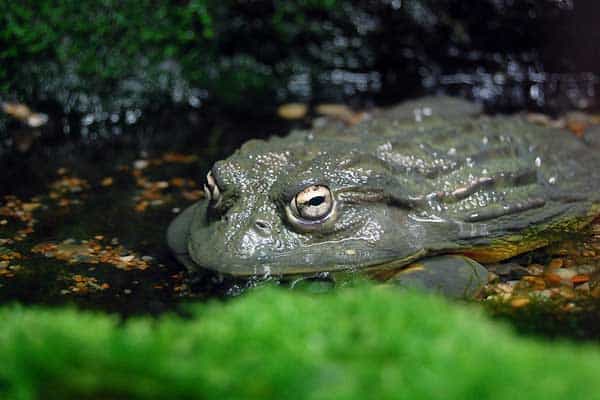
Scientific Name: Pyxicephalus adspersus
The African bullfrog is a large frog species that can grow to be 9 inches long and weigh up to 2 pounds. Their skin is olive in color, with yellow to orange throats. Males of this species are also larger than females.
At adult size, their tongues are about 3 inches long. The African Bullfrog can live up to 16 years and eats anything that fits in its mouth, including small birds. Their long tongues are also used to catch prey, such as crickets, spiders, worms, and caterpillars.
3. American bullfrog
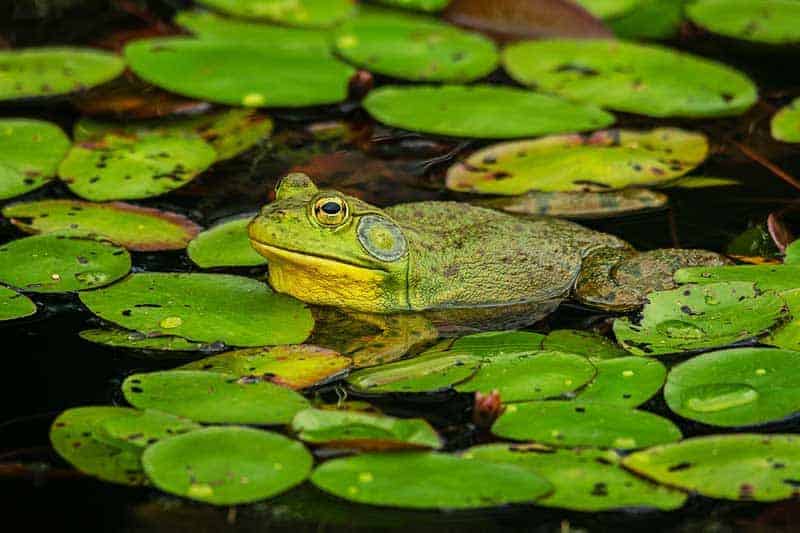
Scientific Name: Lithobates catesbeianus
American bullfrogs are native to most of North America and are frequently seen in marshes, ponds, lakes, and slow-moving streams. These species can grow to be up to 8 inches long, making them the continent’s largest true frogs.
This frog has a large jaw that can open wide enough to swallow prey nearly half the length of its own body and a very long tongue that’s about 2 inches long. They’re also known to devour snakes, frogs, salamanders, crustaceans, and other small animals that come into contact with them.
Conclusion
In conclusion, a frog’s tongue length varies according to its size. Only a few frogs have tongues longer than an inch, and the majority have tongues shorter than 1 inch. This body organ is critical to their survival because it’s used to catch their prey, which is usually very fast to flee.
